This article was co-authored by Mohiba Tareen, MD. Mohiba Tareen is a board certified Dermatologist and the founder of Tareen Dermatology located in Roseville, Maplewood and Faribault, Minnesota. Dr. Tareen completed medical school at the University of Michigan in Ann Arbor, where she was inducted into the prestigious Alpha Omega Alpha honor society. While a dermatology resident at Columbia University in New York City, she won the Conrad Stritzler award of the New York Dermatologic Society and was published in The New England Journal of Medicine. Dr. Tareen then completed a procedural fellowship which focused on dermatologic surgery, laser, and cosmetic dermatology.
There are 15 references cited in this article, which can be found at the bottom of the page.
wikiHow marks an article as reader-approved once it receives enough positive feedback. In this case, 100% of readers who voted found the article helpful, earning it our reader-approved status.
This article has been viewed 1,043,310 times.
If you've sustained an injury, large or small, you may end up with a scar. It's a natural outcome in the process of wound healing: collagen in the deeper layers of your skin becomes exposed and rises to the surface to "close" the wound, and in the process, forms a scar. There are no magical home remedies to prevent scarring, but there are some things you can do to influence the way the scar tissue will develop and mature during the natural process of wound healing.
Steps
Treating the Wound
-
1Clean the wound. The first step in allowing the wound to start the natural healing process is to clean the area. Be sure there are no unwanted materials lodged inside the injured area that could lead to infection.[1]
- Use soap and water. Gently wash the area with mild soap and warm water to clean the injury. Use clean, dry materials to apply pressure to stop the bleeding.
- Avoid using hydrogen peroxide to clean the area. As your body starts to immediately produce new skin cells, the peroxide destroys those new cells and increases the chances of a scar beginning to form in the early stages of treatment.
-
2Determine if you need medical attention. Examples of wounds that may need medical attention include those that were caused by an object that deeply punctured the skin; wounds that continue to bleed freely; are deep; involve a broken bone; have visible internal tendons, ligaments, or bone; are on the face; involve an animal bite; have layers of skin that are torn or jagged; or have caused an existing wound to re-open.[2]
- Depending on the severity of the injury, stitches or sutures may be needed. Actually, sutures may help to reduce the risk of scarring. Once you have ruled out the need for medical attention and/or stitches, proceed with taking care of the wound at home.
- If you have an injury on your face, you may wish to have a plastic surgeon do the sutures, as she will be particularly capable of using techniques that will minimize scarring.
Advertisement -
3Apply petroleum jelly. Petroleum jelly keeps the injured area moist, promotes healing, and prevents the formation of a scab. Petroleum jelly does not interfere with the natural healing of the injury. In fact, it can speed up the process.[3]
- If a scar does form, using petroleum jelly can minimize the size of the scar as the tissues heal.
- Scabs are the body’s natural way of forming a protective covering over a fresh injury; however, just beneath the scab is where the scar is starting to form.
- As your body heals itself, collagen is brought to the surface of the skin to reconnect the broken and damaged tissue.
- Then a temporary crusty covering, the scab, forms above the collagen. As the collagen works to mend the broken tissue, it also starts the formation of the scar just beneath the scab.
-
4Use hydrogel sheets or silicone gel bandages. Some evidence suggests that hydrogel sheets or silicone gel can reduce scarring. These dressings provide moisture to the injured tissues during the healing process and help in reducing the formation of scars.[4]
- Hydrogel and silicone gel dressings work by supporting the natural fluid exchange between your healthy tissues and the injury. They are pressure dressings that keep the tissues moist, thereby assisting in the prevention of scars.
- Follow the directions on the packaging if you choose to use one of these products. They are available without a prescription. Product manufacturers have recommendations of use specific to their products.
- Similar products are available at a reduced cost. Ask your doctor or pharmacist about recommending over-the-counter scar therapy cosmetic pads.
- Continue the use of moisture/pressure dressings for several weeks or even longer to reduce the formation and size of scars.
- The use of petroleum jelly is not needed if you choose to apply hydrogel, silicone gel dressings, or the less expensive alternatives, as long as they provide adequate moisture to the wound.
- Examine your wound daily to determine their effectiveness in your specific situation. Consider changing your dressing materials if the tissues are not moist and scab tissue is forming.
-
5Cover the injury. Use a bandage that is appropriate to the size of the area, provides protection to the wound, keeps the area closed, and covers the injury completely. Exposure to air does not interfere with healing but it also does not help with scar prevention. In fact, you may be more likely to develop a scar if you leave the injury uncovered and unprotected.[5]
- Exposure to air encourages the injury to dry out and leads to the formation of scabs. Scabs act as a barrier that contributes to the formation of a scar.
- If you have skin that is sensitive to adhesive, use dressing pads that are non-adhesive and use paper or medical tape to secure the edges.
- Use butterfly wound closures if needed. This type of bandage pulls together areas where the skin is split. Be sure to use closures that are long enough to allow for the petroleum jelly without compromising their ability to adhere to the surrounding skin.
- Even with butterfly closures, you still need to cover the area with gauze or a dressing pad large enough to cover the entire area to reduce the risk of infection or further accidental injury.
-
6Change the dressings every day. Clean the area each day, check for signs of infection, keep the injury moist by re-applying petroleum jelly, and cover it back up.[6]
- If the butterfly closures are secure and there are no signs of infection beneath them, then you can leave them in place.
- Continue to examine the injury daily for improvement, or possible signs of infections, as you clean the wound, change the dressings, and re-apply the petroleum jelly.
- Once you see that new skin has grown together in a healthy manner, which may take as many as seven to 10 days, you can extend the time between your dressing changes to several days as long as you keep the area moist. Discontinue your treatments once the area is fully healed.
-
7Monitor for infection. Change the dressing daily, clean the area with each dressing change using mild soap and water and clean materials, and check for changes that may indicate an infection. Even the best cared for wounds can develop an infection.[7]
- See your doctor as soon as possible if you notice signs of an infection. He or she may recommend that you proceed with the use of topical antibiotic products or may prescribe an oral antibiotic to take for a period of time.
- Signs of infections in a wound include redness or swelling in the area, warmth to the touch, red streaks protruding from the skin around the injury, pus or fluid accumulating under the skin, near the wound, or draining from the wound, an odor coming from the wound, throbbing or unusual tenderness in the area, and having chills or running a fever.
Preventing Scar Formation
-
1Massage the area. Once the healing process is underway, massaging the area helps to breakdown the formation of collagen that leads to scar tissue. Be careful not to re-open a wound that is still trying to heal.[8]
- Massaging the area breaks the formation of collagen bonds and prevents the formation of solid areas of collagen that attach to the new skin growth. This action prevents scars from forming or minimizes their size.
- Massage the area several times each day using a circular motion for 15 to 30 seconds each time.
- Use a lotion or cream recommended for scar prevention to help with the massage. Several products are available without a prescription that can be used.
- One popular products contain varying strengths of an ingredients including onion skin extract and has been shown to provide some efficacy. Other products contain a combination of ingredients that help to maintain moisture in the skin to reduce scarring.
-
2Apply pressure. Gentle and consistent pressure to the wound helps prevent or minimize scarring. Focus the pressure along the area most likely to scar.[9]
- Bandages are available that help with applying pressure. Other than the hydrogel and silicone sheeting previously mentioned, other products designed to add constant pressure to the wound area as well as provide protection are available.
- Ask your doctor about ways to safely create a custom fitting pressure application bandage. Options include using regular dressing materials to create a thicker area of a standard bandage that can be applied directly over the potential scar.
- For larger or more prominent areas of scarring, pressure appliances are available that are worn during the daytime hours and for as long as four to six months. This is a costly venture and would require evaluation and recommendation by a physician or wound care specialist.
- One research study done in animals using scar compression therapy resulted in significant and sustained improvement in areas of scarring, decreased thickness of the dermal skin layer where the scars were located, and increased blood flow in the areas treated.[10]
-
3Apply elastic tape. Once the area has healed and there is no risk of pulling the wound open, use elastic tape in specific patterns to lift the skin, improve circulation to the area just beneath the injury, and prevent the development of scars.[11]
- The most familiar brand name of this type of tape is also the name of the taping procedure, Kinesio Taping.
- Wait two to four weeks after the initial injury to be sure the wound is well healed.
- Different patterns of taping are recommended depending on the location, depth, and length of the injury. Work with your doctor, a physical therapist, or sports trainer, to understand the most appropriate patterns to use for your injury.
- One common taping pattern to prevent scarring involves applying a single layer or strip of elastic tape along the length of the injury. Stretch the tape to about 25 to 50% of its elasticity. Massage the tape into place over the wounded area.
- Gradually increase the tension of the tape application over time, provided the skin is able to tolerate this without pulling or tearing.
- Kinesio taping works best to prevent scars by using patterns that lift the skin, aid in circulation, and break up collagen formations. Talk to your doctor, physical therapist, or sports trainer to understand the best patterns for your injury.
-
4Minimize movement. Tension and motion will cause the scar to widen, so try your best to avoid activity that tightly pulls the skin around the wound.
- Use gentle movements if the injury is located on a joint area, like an elbow or knee. You want to regain your range of motion, but you need to take care not to re-open the wound.
- Continue with any regular exercise or daily routines provided that the injury is not negatively impacted by those activities. Exercise helps to promote circulation throughout your body which is important in healing your injury.
Enhancing the Healing Process
-
1Protect your injury from sun exposure. Use sunscreen to protect the new skin from sun exposure once your injury is healing and you no longer need to maintain constant dressings to cover the area.[12]
- The ultraviolet rays from the sun can slow the healing process. Be sure your injury is healing nicely before you remove the dressing materials that provide a barrier between it and the rays of the sun.
- The sun also triggers pigments in your skin. This can cause the new skin growth to be susceptible to a red or brown discoloration, making a scar more obvious if one did develop.
- Use a product with broad spectrum coverage and an SPF of at least 30.
-
2Eat a diet that promotes wound healing. Maintaining a healthy diet provides important nutrients that promote the healing of damaged tissues. Key ingredients in a diet designed to promote tissue healing are vitamin C, protein, and zinc.[13]
- Increase foods rich in Vitamin C in your daily diet. There is evidence to support the recommendation to increase your intake of vitamin C to prevent scarring of tissues after a recent injury. While vitamin C supplements are available, it is possible to get enough from your diet. [14]
- Check with your doctor about dose. Most people can increase foods that are rich in vitamin C to get enough to help promote the healing process. In some cases, a higher than average dose may be justified but only after consulting with your doctor.
- Vitamin C is quickly used up by your body, so include foods that contain vitamin C at each meal and possibly even as a snack.
- Vegetables that are rich in vitamin C include bell peppers, broccoli, potatoes, tomatoes, and cabbage. Fruits that contain high levels of vitamin C include oranges, strawberries, grapefruit, cantaloupe, and tangerines.
- Some recent work suggests that consuming more vitamin C in your diet, or possibly in supplement form, accompanied by using a topical cream made from vitamin C may help to prevent scarring. Topical vitamin C products are available in strengths that range from 5% to 10%.
- Increase the amount of zinc in your diet by eating foods like beef, liver, and seafood like crab. Zinc is also found in sunflower seeds, almonds, peanut butter, and dairy products like milk and eggs.
- Protein is key in providing the nutrients your body needs to heal damaged skin. Good sources of protein include dairy products like eggs, milk, and cheese, plus fish, shellfish, tuna, chicken, turkey, and red meat.
-
3Increase your consumption of curcumin. Curcumin is a spice that is a derivative of ginger, is a primary compound found in turmeric, and is often used in preparing Indian style foods.[15]
- One research study done in animals found a positive correlation in controlling the inflammatory response leading to improved wound-healing. The authors conclude that there may be a positive relationship in promoting the healing process of damaged tissues and preventing scarring.
- There is limited evidence to support the use of curcumin beyond this one animal study.
-
4Apply honey to your wound. The research regarding the use of honey to promote wound healing is controversial, yet there is enough evidence to support the use of medicinal honey in speeding up the healing process of some types of wounds. Scar formation is less likely when wounds heal themselves faster.[16]
- The most recommended form of medicinal honey used to treat wounds is called Manuka honey. Manuka honey was approved by the FDA in 2007 as a recommended option for treating wounds.
- It is difficult to find since it is generally only made in certain parts of the globe where Manuka trees grow naturally.
- The high demand of Manuka honey makes it likely that some products may be counterfeit, so use caution if you choose to purchase this type of honey.
- Make a wound dressing by using small amounts of Manuka honey applied to the dressing material, such as a sterile pad. Apply the dressing to the wound, and seal the edges with the appropriate type of medical type to prevent leakage.[17]
- Clean the wound and change the dressing several times each day. Always check for signs of infection.
-
5Apply aloe vera. The scientific research is limited. Manufacturers continue to claim benefit in the wound healing properties of aloe vera, and traditional Chinese medicine and other cultures continue to use aloe vera both topically and orally.[18]
- If you are going to use aloe vera, use fresh aloe straight from the plant and do not mix it with any skin creams or moisturizers.[19]
- The most recent review of published literature does not provide adequate evidence to support benefit in wound healing. However, study authors recommend more controlled trials to appropriately study and report on the healing properties of aloe vera.
- Manufactured gel products of aloe vera for topical use are usually combined with vitamins A, B, C, and E, along with enzymes, amino acids, sugars and minerals.
- Taking aloe vera orally is not recommended due to the lack of evidence to support an efficacy and the toxicities related to ingesting aloe vera.
-
6Avoid using vitamin E. Although we have heard for years of the healing power and scar prevention capability of applying topical vitamin E to a new injury, recent research has proven that vitamin E does not help to prevent the tissues from forming a scar.[20]
- Some research suggests that vitamin E applied topically may actually impair the natural healing process.
- Other work has discovered that topical vitamin E can result in new allergic reactions in as many as 30% of people that use vitamin E in this manner.
-
7Avoid applying antibiotic creams or ointments. Unless there are signs of an infection or you are told to do so by your doctor, there is no need to use over-the-counter antibiotic creams or ointments.[21]
- More people are becoming resistant to antibiotics due to unnecessary, repeated, or prolonged use of these agents.
- This includes the topical use of over-the-counter antibiotic products.
Expert Q&A
-
QuestionWhy do hydrogel sheets help prevent scarring?
 Mohiba Tareen, MDMohiba Tareen is a board certified Dermatologist and the founder of Tareen Dermatology located in Roseville, Maplewood and Faribault, Minnesota. Dr. Tareen completed medical school at the University of Michigan in Ann Arbor, where she was inducted into the prestigious Alpha Omega Alpha honor society. While a dermatology resident at Columbia University in New York City, she won the Conrad Stritzler award of the New York Dermatologic Society and was published in The New England Journal of Medicine. Dr. Tareen then completed a procedural fellowship which focused on dermatologic surgery, laser, and cosmetic dermatology.
Mohiba Tareen, MDMohiba Tareen is a board certified Dermatologist and the founder of Tareen Dermatology located in Roseville, Maplewood and Faribault, Minnesota. Dr. Tareen completed medical school at the University of Michigan in Ann Arbor, where she was inducted into the prestigious Alpha Omega Alpha honor society. While a dermatology resident at Columbia University in New York City, she won the Conrad Stritzler award of the New York Dermatologic Society and was published in The New England Journal of Medicine. Dr. Tareen then completed a procedural fellowship which focused on dermatologic surgery, laser, and cosmetic dermatology.
FAAD Board Certified Dermatologist Silicone sheets are really good at helping skin heal because they're pliable and silicone is an inert element. This means it soothes and hydrates the skin while it heals. They also tend to do a good job of keeping air and bacteria out, which can make scarring worse.
Silicone sheets are really good at helping skin heal because they're pliable and silicone is an inert element. This means it soothes and hydrates the skin while it heals. They also tend to do a good job of keeping air and bacteria out, which can make scarring worse. -
QuestionIs aloe vera gel just as good as the plant?
 Mohiba Tareen, MDMohiba Tareen is a board certified Dermatologist and the founder of Tareen Dermatology located in Roseville, Maplewood and Faribault, Minnesota. Dr. Tareen completed medical school at the University of Michigan in Ann Arbor, where she was inducted into the prestigious Alpha Omega Alpha honor society. While a dermatology resident at Columbia University in New York City, she won the Conrad Stritzler award of the New York Dermatologic Society and was published in The New England Journal of Medicine. Dr. Tareen then completed a procedural fellowship which focused on dermatologic surgery, laser, and cosmetic dermatology.
Mohiba Tareen, MDMohiba Tareen is a board certified Dermatologist and the founder of Tareen Dermatology located in Roseville, Maplewood and Faribault, Minnesota. Dr. Tareen completed medical school at the University of Michigan in Ann Arbor, where she was inducted into the prestigious Alpha Omega Alpha honor society. While a dermatology resident at Columbia University in New York City, she won the Conrad Stritzler award of the New York Dermatologic Society and was published in The New England Journal of Medicine. Dr. Tareen then completed a procedural fellowship which focused on dermatologic surgery, laser, and cosmetic dermatology.
FAAD Board Certified Dermatologist Not necessarily. If you're using aloe vera, it's best to go with the naturally occurring juice from the aloe vera plant. Don't mix it with anything or use over-the-counter aloe vera concoctions.
Not necessarily. If you're using aloe vera, it's best to go with the naturally occurring juice from the aloe vera plant. Don't mix it with anything or use over-the-counter aloe vera concoctions.
References
- ↑ https://www.aad.org/dermatology-a-to-z/health-and-beauty/general-skin-care/proper-wound-care-minimize-a-scar
- ↑ https://www.nhs.uk/common-health-questions/accidents-first-aid-and-treatments/does-my-cut-need-stitches/
- ↑ https://www.aad.org/dermatology-a-to-z/health-and-beauty/general-skin-care/proper-wound-care-minimize-a-scar
- ↑ Mohiba Tareen, MD. FAAD Board Certified Dermatologist. Expert Interview. 26 March 2020.
- ↑ https://www.aad.org/dermatology-a-to-z/health-and-beauty/general-skin-care/proper-wound-care-minimize-a-scar
- ↑ https://www.aad.org/dermatology-a-to-z/health-and-beauty/general-skin-care/proper-wound-care-minimize-a-scar
- ↑ https://www.seattlechildrens.org/conditions/a-z/wound-infection/
- ↑ https://www.britishskinfoundation.org.uk/blog/the-benefits-of-scar-massage
- ↑ https://www.ncbi.nlm.nih.gov/pmc/articles/PMC4486716/
- ↑ http://www.ncbi.nlm.nih.gov/pubmed/26171101
- ↑ https://www.ncbi.nlm.nih.gov/pmc/articles/PMC3663392/
- ↑ https://www.aad.org/public/everyday-care/injured-skin/burns/wound-care-minimize-scars
- ↑ http://www.drugs.com/cg/wound-healing-and-your-diet.html
- ↑ https://www.nhs.uk/conditions/vitamins-and-minerals/vitamin-c/
- ↑ http://www.ncbi.nlm.nih.gov/pmc/articles/PMC4556061/
- ↑ http://www.ncbi.nlm.nih.gov/pmc/articles/PMC3495394/
- ↑ http://dermnetnz.org/treatments/honey.html
- ↑ http://www.ncbi.nlm.nih.gov/pmc/articles/PMC3495394/
- ↑ Mohiba Tareen, MD. FAAD Board Certified Dermatologist. Expert Interview. 26 March 2020.
- ↑ http://onlinelibrary.wiley.com/doi/10.1046/j.1524-4725.1999.08223.x/abstract
- ↑ https://www.aad.org/dermatology-a-to-z/health-and-beauty/general-skin-care/proper-wound-care-minimize-a-scar
About This Article
To prevent scarring, keep the wound moist by applying petroleum jelly to it and covering it with a bandage.This prevents a scab from forming, which is when scarring begins to develop. While your wound is healing, massage the area in 15 to 30 second intervals throughout the day which can help prevent scar tissue by breaking down the formation of collagen. At the same time, try to minimize movement that could pull the skin around the wound, since this may cause the scar to widen. Another way to prevent scarring is to apply gentle and consistent pressure to the wound. Try to use products like hydrogel and silicone sheets, since they were designed to add constant pressure to wounds. For more advice from our Medical co-author, including how to use honey to speed up healing, keep reading!
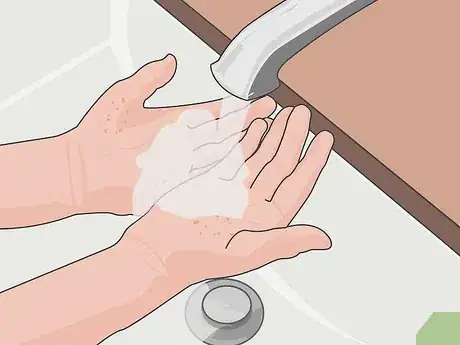

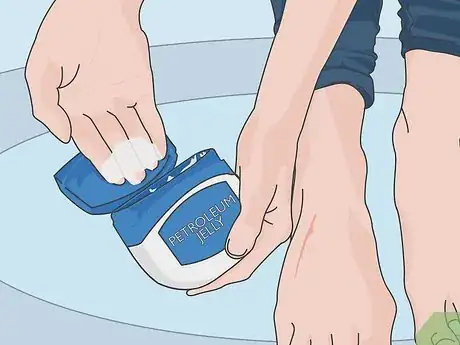
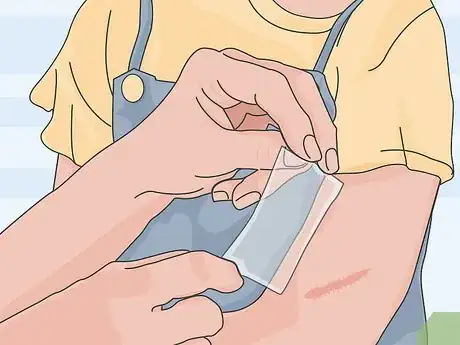

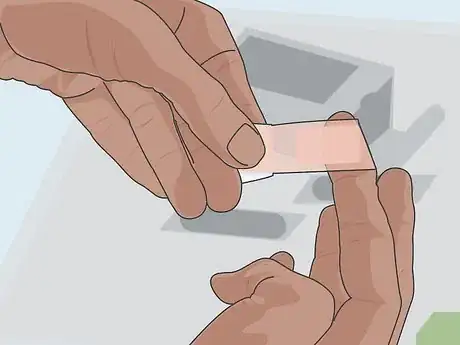
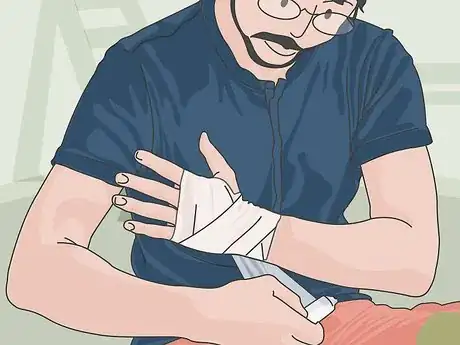
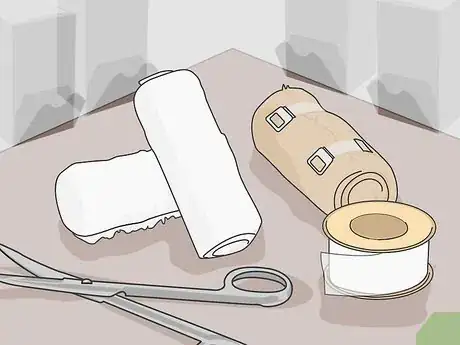
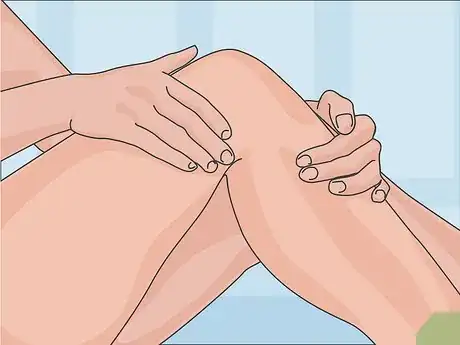
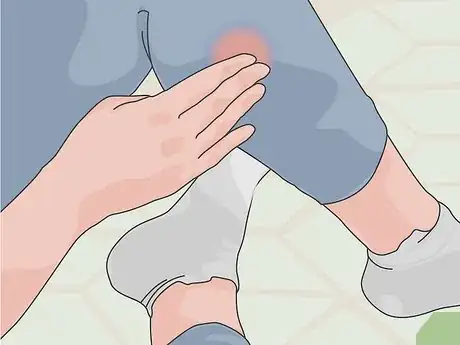
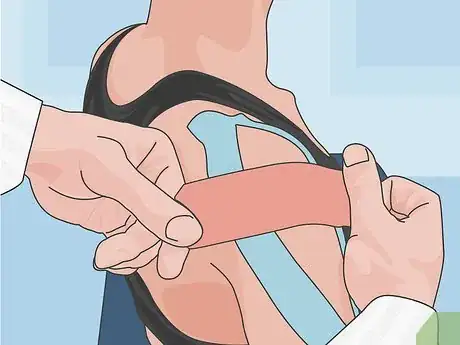

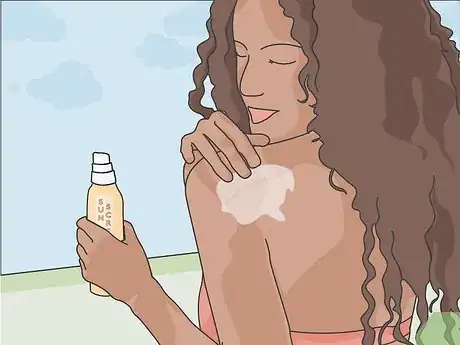



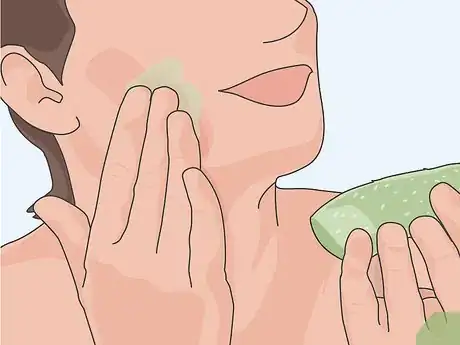
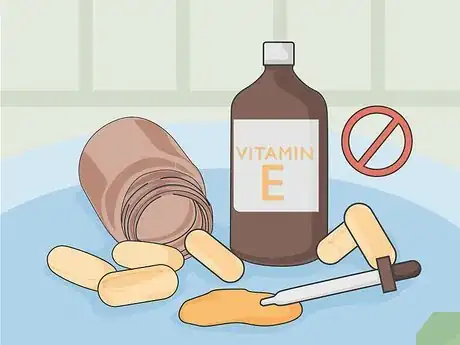
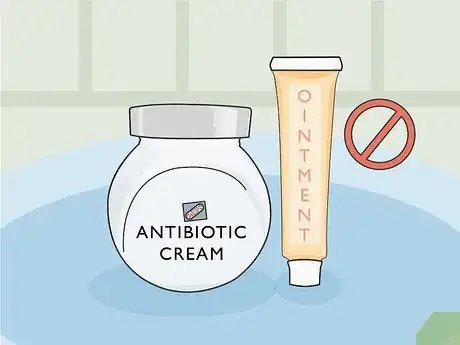




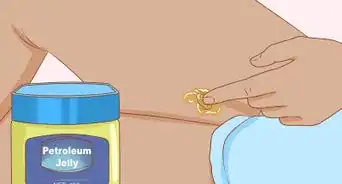
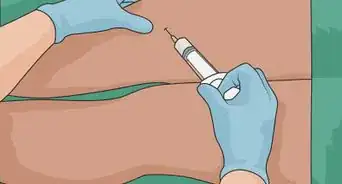



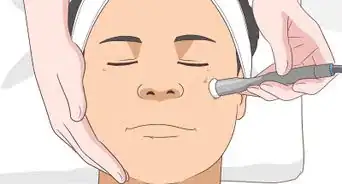




















































Medical Disclaimer
The content of this article is not intended to be a substitute for professional medical advice, examination, diagnosis, or treatment. You should always contact your doctor or other qualified healthcare professional before starting, changing, or stopping any kind of health treatment.
Read More...